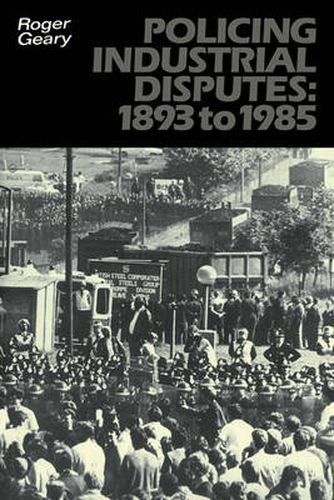Readings Newsletter
Become a Readings Member to make your shopping experience even easier.
Sign in or sign up for free!
You’re not far away from qualifying for FREE standard shipping within Australia
You’ve qualified for FREE standard shipping within Australia
The cart is loading…






The re-emergence of prolonged and bitter industrial violence during the 1984-85 miners’ dispute prompted many onlookers to speculate that British society was rushing headlong into anarchy. Others, more fearful of order than chaos, felt that they were witnessing the emergence of a police state. In this 1985 study, Dr Geary provides a fascinating and detailed account of the changing nature of industrial violence, in which historic episodes such as the Featherstone Shootings and Tonypandy Riots are examined as part of a general analysis of the shifting patterns of industrial confrontation. His central contention is that both police and strikers are subject to many, sometimes contradictory, political pressures in the industrial context. As these political constraints tighten or relax so the nature of industrial disorder and the corresponding tactics of police control change. This balanced appraisal of industrial violence illumintes what has become a political issue of the utmost significance.
$9.00 standard shipping within Australia
FREE standard shipping within Australia for orders over $100.00
Express & International shipping calculated at checkout
The re-emergence of prolonged and bitter industrial violence during the 1984-85 miners’ dispute prompted many onlookers to speculate that British society was rushing headlong into anarchy. Others, more fearful of order than chaos, felt that they were witnessing the emergence of a police state. In this 1985 study, Dr Geary provides a fascinating and detailed account of the changing nature of industrial violence, in which historic episodes such as the Featherstone Shootings and Tonypandy Riots are examined as part of a general analysis of the shifting patterns of industrial confrontation. His central contention is that both police and strikers are subject to many, sometimes contradictory, political pressures in the industrial context. As these political constraints tighten or relax so the nature of industrial disorder and the corresponding tactics of police control change. This balanced appraisal of industrial violence illumintes what has become a political issue of the utmost significance.